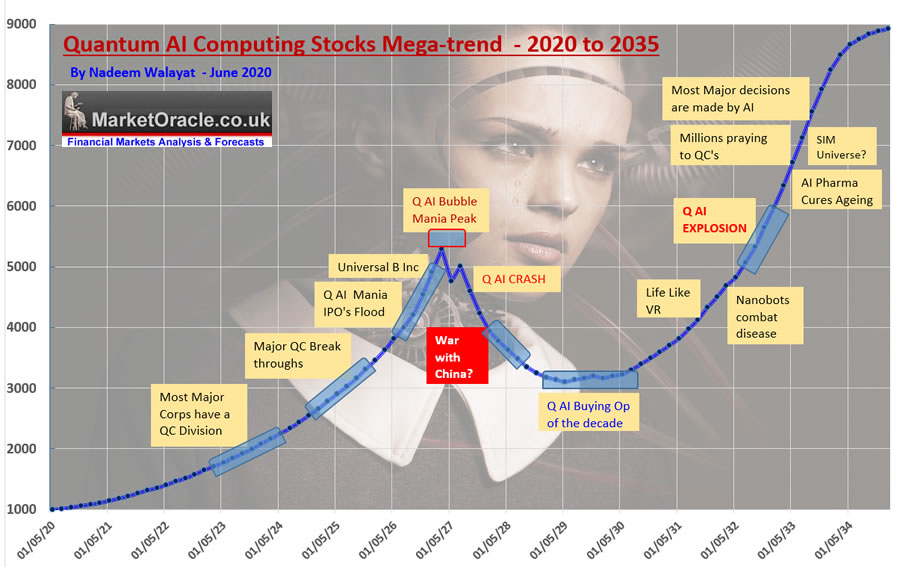1. Set clear trading goals
Tips: Define trading objectives such as your returns and risk tolerance. Also, specify whether you prefer copyright, penny stocks or both.
What is the reason: Specific objectives should guide the choice and use of AI algorithms.
2. Reliable AI-powered trading platforms
Tips: Choose an AI-powered trading platforms that allow for full automation and integration to your brokerage or copyright currency exchange. Examples include:
For Penny Stocks: MetaTrader, QuantConnect, Alpaca.
For copyright: 3Commas, Cryptohopper, TradeSanta.
Why: The most important factor to automation’s success is a stable platform with strong execution capabilities.
3. Customizable Trading algorithms are the primary goal
Tip: Create or alter your trading algorithms to suit your trading strategy.
How do they work? Customized strategies guarantee that the strategy you choose to use is compatible with your unique trading style.
4. Automate Risk Management
Set up automated tools to manage risk, such as trailing stop orders, take-profit levels, and stop-loss orders.
What are the benefits? These protections safeguard your portfolio from massive losses, particularly in volatile markets such as penny stocks and copyright.
5. Backtest Strategies Before Automation
Tip : Re-test the automated algorithm to assess their performance prior to starting.
Why is it important to backtest the strategy can be successful and reduces the chance of a poor results in live markets.
6. Regularly monitor performance and adjust settings
Tip: Even if trading is automated, you should check performance to identify any performance issues or problems.
What to track What to track: Profit and Loss Slippage, profit and loss and if the algorithm is in line with the market’s conditions.
What is the reason? A continuous monitoring process lets you make adjustments in time if conditions on the market alter. Then you can be sure that your plan remains effective.
7. Implement adaptive Algorithms
Tips: Choose AI tools which adapt to market changes by changing parameters based on actual-time data.
The reason: Since markets change constantly, adaptive algorithms can be used to improve strategies for penny stocks or cryptos in order to match new trends and volatility.
8. Avoid Over-Optimization (Overfitting)
Tip: Be cautious of over-optimizing your automated system by using past data that could lead to over-fitting (the system works very well in backtests, but not under actual conditions).
The reason is that overfitting can reduce your strategy’s ability generalize to future conditions.
9. AI for Market Analysis
Tip: Make use of AI to detect unusual patterns in the market or for identifying anomalies (e.g. sudden spikes in volume of trading or news sentiment, or copyright whale activity).
The reason: Being aware of these signals can allow you to adjust your automated trading strategies prior to major market movements occur.
10. Integrate AI into regular notifications and alerts
Tip Set up real-time alerts for major market events like trade executions or changes in your algorithm’s performance.
Why is that alerts let you know about important market movements. They also allow you to take action quickly, especially in volatile markets (like copyright).
Bonus: Cloud-based Solutions are Scalable
Tip. Use cloud-based trading platforms for greater capacity.
Cloud solutions allow your trading system operate 24/7 and 365 days of the year and with no interruption. They are especially useful in the copyright market because they don’t close.
Automating your trading strategy and maintaining regular monitoring will enable you to benefit from AI powered copyright and stock trading, while minimizing risk and improving your performance. View the best ai trading app for more tips including ai stocks to invest in, ai penny stocks to buy, stock analysis app, ai trading bot, ai stock market, ai for trading stocks, ai trading, best ai stocks, ai stock trading bot free, ai trading and more.

Top 10 Tips For Improving Data Quality In Ai Stock Pickers, Predictions And Investments
The quality of the data is vital for AI-driven investment, forecasts and stocks. AI models are more accurate and reliable if they utilize quality data. Here are ten tips for ensuring the quality of data in AI stock pickers:
1. Prioritize data that is clean and well-structured.
TIP: Ensure your data is clean, error-free, and formatted in a consistent manner. This includes removing redundant entries, handling the absence of values, as well as ensuring integrity.
Why is that clean and organized information allows AI models to process information more effectively. This leads to better predictions and fewer decisions made with errors.
2. Real-time information and timeliness are crucial.
Tip: For precise predictions take advantage of actual-time, current market data including stock prices and trading volumes.
The reason: Timely data makes sure that AI models reflect the current market conditions, which is essential for making accurate stock picks, especially in markets that are constantly changing, such as penny stocks or copyright.
3. Source data from reliable providers
Tip: Only choose data providers who are reliable and have been thoroughly scrutinized. This includes financial statements, economic reports and price feeds.
The reason: The use of reliable data sources decreases the possibility of errors and inconsistencies in data, which could affect AI model performance or result in inaccurate prediction.
4. Integrate data from multiple sources
TIP: Use various data sources, such as news sentiment and financial statements. You can also mix macroeconomic indicators with technical indicators, such as moving averages or RSI.
Why: By capturing various aspects of stock behavior, AI can make better decisions.
5. Backtesting focuses on historical data
TIP: Use the historical data from your past to backtest AI models and evaluate their performance in various market conditions.
Why: Historical Data helps you refine AI models. You are able to test trading strategies in a simulation to evaluate potential returns and risks as well as ensure AI predictions that are robust.
6. Check the validity of data on a regular basis
TIP: Check regularly the data’s quality, checking for inconsistencies. Update information that is outdated and ensure the data is relevant.
What is the reason: Consistent validation assures that the data you feed into AI models is reliable and reduces the chance of incorrect predictions based on faulty or outdated data.
7. Ensure Proper Data Granularity
Tips: Choose the appropriate level of data granularity to fit your plan. Use daily data for investments in the long run or minute-by-minute data for trading at high frequency.
What’s the reason? The correct amount of data is crucial for your model to reach its objectives. For instance high-frequency trading data may be helpful for short-term strategies but data with a higher quality and lower frequency is required for long-term investing.
8. Incorporate Alternative Data Sources
You might want to consider using other sources of data such as satellite imagery, social media sentiment or web scraping to monitor market developments and news.
The reason: Alternative data sources can provide unique insights into market behavior, giving your AI system an advantage by identifying patterns that traditional data sources might miss.
9. Use Quality-Control Techniques for Data Preprocessing
Tips. Use preprocessing techniques such as feature scaling data normalization or outlier detection to improve the quality of your raw data prior to the time you put it into AI algorithms.
Why? Proper preprocessing allows the AI to make accurate interpretations of data, which reduces the errors of predictions and enhances model performance.
10. Track Data Digressions and adapt models
Tips: Always check for data drift (where the characteristics of the data change as time passes) and adjust your AI model to reflect this.
What is the reason? Data drift could adversely affect model accuracy. By identifying, and adjusting to shifts in the patterns of data, you can make sure that your AI remains effective over time especially on markets that are dynamic like copyright or penny stocks.
Bonus: Maintaining the feedback loop to ensure Data Improvement
Tips: Make a feedback loop in which AI models continuously learn from the latest information, performance data and methods for data collection.
Why is this: Feedback loops enable you to continuously improve the quality of your data and to make sure that AI models reflect current market patterns and trends.
To allow AI stock-pickers to realize their potential, it’s essential to concentrate on data quality. AI models are able to make more accurate predictions if they are able to access high-quality data that is current and clean. This leads them to make better investment decisions. With these suggestions you can make sure that your AI system has the highest quality base of data for stock selection forecasts, investment strategies. Check out the recommended artificial intelligence stocks for website examples including ai predictor, ai for investing, ai stock trading app, using ai to trade stocks, ai investment platform, ai financial advisor, best ai trading app, trade ai, ai for stock market, stock ai and more.
